 |
Classic Movies
Sometimes you just can't beat a classic film. And by classic, I surely do mean my own, strange definition. In this category you will find full length, feature films that have passed into the public domain over the years, and are very much worth watching. I'll be adding additional films regularly, with the most recently uploaded films listed first. So sit back, pop some popcorn or whatnot, and enjoy.
The Cabinet of Dr. Caligari (1920)
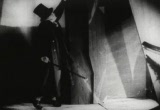 Also known (in its original language) as Das Kabinett des Doktor Caligari, the Cabinet of Dr. Caligari is considered to be the first modern horror film ever produced. A man named Francis relates a story about his best friend Alan and his fiancée Jane. Alan takes him to a fair where they meet Dr. Caligari, who exhibits a somnambulist, Cesare, that can predict the future. When Alan asks how long he has to live, Cesare says he has until dawn. The prophecy comes to pass, as Alan is murdered, and Cesare is a prime suspect. Cesare creeps into Jane's bedroom and abducts her, running from the townspeople and finally dying of exhaustion. Meanwhile, the police discover a dummy in Cesare's cabinet, while Caligari flees. Francis tracks Caligari to a mental asylum. He is the director! Or is he? Also known (in its original language) as Das Kabinett des Doktor Caligari, the Cabinet of Dr. Caligari is considered to be the first modern horror film ever produced. A man named Francis relates a story about his best friend Alan and his fiancée Jane. Alan takes him to a fair where they meet Dr. Caligari, who exhibits a somnambulist, Cesare, that can predict the future. When Alan asks how long he has to live, Cesare says he has until dawn. The prophecy comes to pass, as Alan is murdered, and Cesare is a prime suspect. Cesare creeps into Jane's bedroom and abducts her, running from the townspeople and finally dying of exhaustion. Meanwhile, the police discover a dummy in Cesare's cabinet, while Caligari flees. Francis tracks Caligari to a mental asylum. He is the director! Or is he?
Starring Werner Krauss, Conrad Veidt, Lil Dagover and Friedrich Feher. |
The Most Dangerous Game (1932)
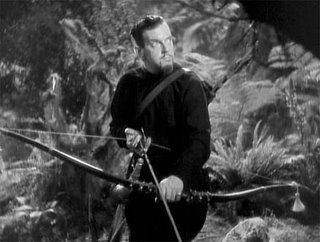 Famous big game hunter and author Bob Rainsford (Joel McCrea) swims to a small, lush island, the sole survivor of a shipwreck. There, he becomes the guest of Russian Count Zaroff (Leslie Banks), a fellow hunting enthusiast. Zaroff remarks that Bob's misfortune is not uncommon; in fact, four people from the previous sinking are still staying with him: Eve Trowbridge (Fay Wray), her brother Martin (Robert Armstrong), and two sailors. Famous big game hunter and author Bob Rainsford (Joel McCrea) swims to a small, lush island, the sole survivor of a shipwreck. There, he becomes the guest of Russian Count Zaroff (Leslie Banks), a fellow hunting enthusiast. Zaroff remarks that Bob's misfortune is not uncommon; in fact, four people from the previous sinking are still staying with him: Eve Trowbridge (Fay Wray), her brother Martin (Robert Armstrong), and two sailors.
What they don't know is that Zaroff is also a hunter, and what he intends to hunt is them. |
The Gorilla (1939)
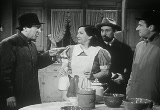 The Gorilla is a 1939 thriller/comedy film starring The Ritz Brothers, Lionel Atwill, Bela Lugosi, and Patsy Kelly. The Gorilla is a 1939 thriller/comedy film starring The Ritz Brothers, Lionel Atwill, Bela Lugosi, and Patsy Kelly.
When a wealthy man (Lionel Atwill) is threatened by a killer known as The Gorilla, he hires the Ritz Brothers to investigate. A real escaped gorilla shows up at the mansion just as the investigators arrive. Patsy Kelly portrays a newly-hired maid who wants to quit because the butler, played by Bela Lugosi, scares her. |
Carnival of Souls (1962)
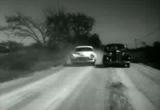 Produced and directed by Herk Harvey, the film tells the story of Mary Henry, a talented young organist (Candace Hilligoss). At the beginning of the film, Mary is riding in a car with a few other girls when some boys challenge them to a drag race. The girls' car runs over the side of a bridge and plunges into the river. Although the others in the car die, Mary mysteriously survives. Produced and directed by Herk Harvey, the film tells the story of Mary Henry, a talented young organist (Candace Hilligoss). At the beginning of the film, Mary is riding in a car with a few other girls when some boys challenge them to a drag race. The girls' car runs over the side of a bridge and plunges into the river. Although the others in the car die, Mary mysteriously survives.
She begins a new life as a church organist. Mary suddenly finds herself haunted by a ghostly figure that seems to stalk her. |
Escape from Sobibor (1987)
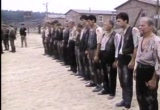 Escape from Sobibor is a made-for-TV film starring Alan Arkin, Joanna Pacula and Rutger Hauer. Directed by Jack Gold, it aired in 1987 on CBS. The film deals with the extermination camp at Sobibor, the site of the most successful uprising by Jewish prisoners of German extermination camps (there were two other uprisings, at Auschwitz and Treblinka). Escape from Sobibor is a made-for-TV film starring Alan Arkin, Joanna Pacula and Rutger Hauer. Directed by Jack Gold, it aired in 1987 on CBS. The film deals with the extermination camp at Sobibor, the site of the most successful uprising by Jewish prisoners of German extermination camps (there were two other uprisings, at Auschwitz and Treblinka).
On October 14, 1943, members of the camp's underground resistance succeeded in covertly killing eleven SS officers and a number of Ukrainian guards. Of the 600 inmates in the camp, roughly 300 escaped, although most were later re-captured and killed. The escape forced the Nazis to close the death camp, dismantling it and planting a forest. |
Kansas City Confidential (1952)
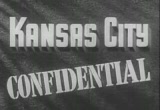 Directed by Phil Karlson and starring John Payne, Coleen Gray, Lee Van Cleef, Neville Brand and Jack Elam. Four robbers hold up an armored truck getting away with over a million dollars in cash. Joe Rolfe (John Payne), a down-on-his-luck flower delivery truck driver is accused of being involved and is roughly interrogated by local police. Released due to lack of evidence, Joe, following the clues to a Mexican resort, decides to look for the men who set him up. What he doesn’t know is that the heist involves a retired policeman who is also intent on revenge. Directed by Phil Karlson and starring John Payne, Coleen Gray, Lee Van Cleef, Neville Brand and Jack Elam. Four robbers hold up an armored truck getting away with over a million dollars in cash. Joe Rolfe (John Payne), a down-on-his-luck flower delivery truck driver is accused of being involved and is roughly interrogated by local police. Released due to lack of evidence, Joe, following the clues to a Mexican resort, decides to look for the men who set him up. What he doesn’t know is that the heist involves a retired policeman who is also intent on revenge. |
Li'l Abner (1940)
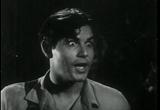 Set in the mythical town of Dogpatch, Li'l Abner is based off of the popular Al Capp comic strip. Dogpatch has a serious unemployment problem. Men spend their days idling away fishing, and the single women spend time scheming about how to catch their preferred single men come the next Sadie Hawkins Day. Daisy Mae has her sights set on Li'l Abner, but rival, Appasianata, has other plans. Set in the mythical town of Dogpatch, Li'l Abner is based off of the popular Al Capp comic strip. Dogpatch has a serious unemployment problem. Men spend their days idling away fishing, and the single women spend time scheming about how to catch their preferred single men come the next Sadie Hawkins Day. Daisy Mae has her sights set on Li'l Abner, but rival, Appasianata, has other plans.
Starring Jeff York, Martha O'Driscoll, and Buster Keaton. Directed by Albert S. Rogell and written by Tyler Johnson. |
The Lost World (1925)
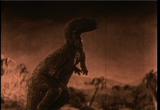 A silent film adaptation directed by Harry O. Hoyt of Arthur Conan Doyle's book of the same name, the movie stars Wallace Beery as Professor Challenger. It features pioneering stop motion special effects by Willis O'Brien (who would later go on to do special effects for the original King Kong). Explorer Professor Challenger is taking quite a beating in the London press thanks to his claim that living dinosaurs exist in the far reaches of the Amazon. Newspaper reporter Edward Malone learns that this claim originates from a diary given to him by fellow explorer Maple White's daughter, Paula. Malone's paper funds an expedition to rescue Maple White, who has been marooned at the top of a high plateau. Joined by renowned hunter John Roxton, and others, the group goes to South America, where they do indeed find a plateau inhabited by pre-historic creatures, one of which they even manage to bring back to London with them. A silent film adaptation directed by Harry O. Hoyt of Arthur Conan Doyle's book of the same name, the movie stars Wallace Beery as Professor Challenger. It features pioneering stop motion special effects by Willis O'Brien (who would later go on to do special effects for the original King Kong). Explorer Professor Challenger is taking quite a beating in the London press thanks to his claim that living dinosaurs exist in the far reaches of the Amazon. Newspaper reporter Edward Malone learns that this claim originates from a diary given to him by fellow explorer Maple White's daughter, Paula. Malone's paper funds an expedition to rescue Maple White, who has been marooned at the top of a high plateau. Joined by renowned hunter John Roxton, and others, the group goes to South America, where they do indeed find a plateau inhabited by pre-historic creatures, one of which they even manage to bring back to London with them. |
The Front Page (1931)
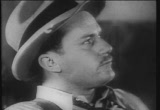 Hildy Johnson (Pat O'Brien), newspaper reporter, is engaged to Peggy Grant and planning to move to New York for a higher paying advertising job. The court press room is full of lame reporters who invent stories as much as write them. All are waiting to cover the hanging of Earl Williams. When Williams escapes from the inept Sheriff, Hildy seizes the opportunity by using his $260 honeymoon money to payoff an insider and get the scoop on the escape. However, Walter Burns (Adolphe Menjou), the Post's editor, is slow to repay Hildy back, hoping that he will stay on the story. Getting a major scoop looks possible when Hildy stumbles onto the bewildered escapee and hides him in a roll-top desk in the press room. Burns shows up to help. Can they keep Williams' whereabouts secret long enough to get the scoop, especially with the Sheriff and other reporters hovering around? Hildy Johnson (Pat O'Brien), newspaper reporter, is engaged to Peggy Grant and planning to move to New York for a higher paying advertising job. The court press room is full of lame reporters who invent stories as much as write them. All are waiting to cover the hanging of Earl Williams. When Williams escapes from the inept Sheriff, Hildy seizes the opportunity by using his $260 honeymoon money to payoff an insider and get the scoop on the escape. However, Walter Burns (Adolphe Menjou), the Post's editor, is slow to repay Hildy back, hoping that he will stay on the story. Getting a major scoop looks possible when Hildy stumbles onto the bewildered escapee and hides him in a roll-top desk in the press room. Burns shows up to help. Can they keep Williams' whereabouts secret long enough to get the scoop, especially with the Sheriff and other reporters hovering around?
This film would later be remade as His Girl Friday starring Cary Grant, with the character of Hildy being rewritten as a woman (played by Rosalind Russell) |
White Zombie (1932)
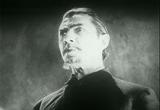 First released on August 4, 1932, it was the first film to feature zombies. The script by Garnett Weston features a young couple in Haiti, Neil Parker (John Harron) and Madeleine Short (Madge Bellamy), who have been invited by a casual acquaintance, Charles Beaumont (Robert Frazer), to come to his plantation to be married. First released on August 4, 1932, it was the first film to feature zombies. The script by Garnett Weston features a young couple in Haiti, Neil Parker (John Harron) and Madeleine Short (Madge Bellamy), who have been invited by a casual acquaintance, Charles Beaumont (Robert Frazer), to come to his plantation to be married.
Beaumont, however, is actually in love with Madeline and hopes to persuade her to become his wife instead. Rebuffed, he approaches local white Voodoo master "Murder" Legendre (Bela Lugosi) to temporarily turn her into a zombie, have her declared dead, send Neil back to the States in mourning, then revive her so that he can woo her anew. Legendre, however, has his own plans for the young lady, and for Beaumont. |
Beat the Devil (1953)
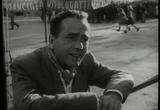 Directed by John Huston and starring Humphrey Bogart, it was co-authored by Huston and Truman Capote, and loosely based upon a novel of the same name by British critic Claud Cockburn, writing under the pseudonym James Helvick. It was intended by Huston as a tongue-in-cheek spoof of his earlier masterpiece, The Maltese Falcon, and of films of its genre. Directed by John Huston and starring Humphrey Bogart, it was co-authored by Huston and Truman Capote, and loosely based upon a novel of the same name by British critic Claud Cockburn, writing under the pseudonym James Helvick. It was intended by Huston as a tongue-in-cheek spoof of his earlier masterpiece, The Maltese Falcon, and of films of its genre.
The script, which was written on a day-to-day basis as the film was being shot, concerns the adventures of a motley crew of swindlers and ne'er-do-wells trying to lay claim to land rich in uranium deposits in Kenya as they wait in a small Italian port of travel aboard an ill-fated tramp steamer en route to Mombasa. |
Meet John Doe (1941)
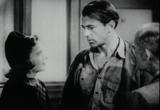 Directed and produced by Frank Capra, Meet John Doe stars Gary Cooper and Barbara Stanwyck. Infuriated at being laid off from her job as a newspaper columnist, Ann Mitchell (Barbara Stanwyck) prints a fake letter from the unemployed "John Doe," threatening suicide in protest of society's ills. When the note causes a sensation, the newspaper is forced to rehire Mitchell. Together, the paper and Ann hire John Willoughby (Gary Cooper), a former baseball player and tramp, to play John Doe. The Doe philosophy spreads across the country, developing into a political movement, with financial support from the newspaper's publisher, D.B. Norton (Edward Arnold), who plans to channel the support for Doe into support for his own political ambitions. Directed and produced by Frank Capra, Meet John Doe stars Gary Cooper and Barbara Stanwyck. Infuriated at being laid off from her job as a newspaper columnist, Ann Mitchell (Barbara Stanwyck) prints a fake letter from the unemployed "John Doe," threatening suicide in protest of society's ills. When the note causes a sensation, the newspaper is forced to rehire Mitchell. Together, the paper and Ann hire John Willoughby (Gary Cooper), a former baseball player and tramp, to play John Doe. The Doe philosophy spreads across the country, developing into a political movement, with financial support from the newspaper's publisher, D.B. Norton (Edward Arnold), who plans to channel the support for Doe into support for his own political ambitions. |
The Hitch-Hiker (1953)
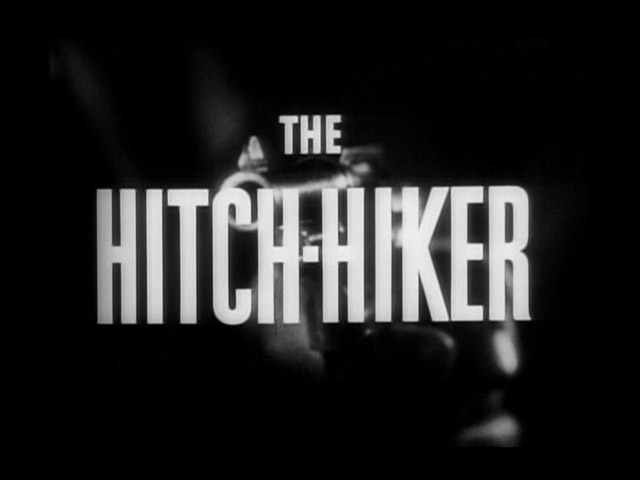 Directed by Ida Lupino, The Hitch-Hiker tells the story of two men (Edmond O'Brien and Frank Lovejoy) on a fishing trip who pick up a hitchhiker named Emmett Myers (William Talman). The Hitch-Hiker turns out to be a psychopath who has committed multiple murders. Directed by Ida Lupino, The Hitch-Hiker tells the story of two men (Edmond O'Brien and Frank Lovejoy) on a fishing trip who pick up a hitchhiker named Emmett Myers (William Talman). The Hitch-Hiker turns out to be a psychopath who has committed multiple murders.
The Hitch-Hiker is based on the true story of Billy Cook who committed a series of murders while hitch-hiking in 1950. The Hitch-Hiker is also historically notable as it is considered the first film noir directed by a woman. |
Phantom of the Opera (1925)
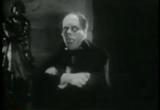 Directed by Rupert Julian, this film is a classic adaptation of Gaston Leroux's novel The Phantom of the Opera, starring Lon Chaney in the title role as the masked and facially desformed 'Phantom' who haunts the Paris Opera House, causing murder and mayhem in an attempt to force the management to make the woman he loves a star. Directed by Rupert Julian, this film is a classic adaptation of Gaston Leroux's novel The Phantom of the Opera, starring Lon Chaney in the title role as the masked and facially desformed 'Phantom' who haunts the Paris Opera House, causing murder and mayhem in an attempt to force the management to make the woman he loves a star.
It is most famous for Lon Chaney's intentionally horrific, self-applied make-up, which was kept a studio secret until the film's premiere. |
Penny Serenade (1941)
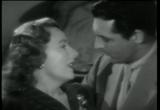 Penny Serenade was directed by George Stevens and written by Martha Cheavens and Morrie Ryskind. Roger (Cary Grant) and Julie Adams (Irene Dunne) suffer a tragedy when she miscarries in an earthquake. They are told that she cannot have children. They adopt a girl, but must struggle to make ends meet and to retain their parental rights when Roger loses his job. When the little girl dies suddenly, the emotional strain threatens to destroy their marriage. Penny Serenade was directed by George Stevens and written by Martha Cheavens and Morrie Ryskind. Roger (Cary Grant) and Julie Adams (Irene Dunne) suffer a tragedy when she miscarries in an earthquake. They are told that she cannot have children. They adopt a girl, but must struggle to make ends meet and to retain their parental rights when Roger loses his job. When the little girl dies suddenly, the emotional strain threatens to destroy their marriage.
The songs that mark episodes in the action are from records from their collection |
Suddenly (1954)
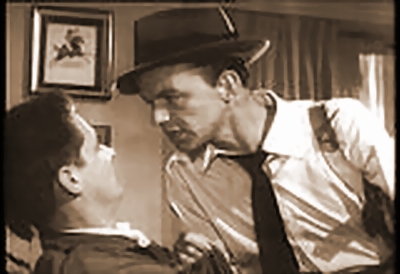 Directed by Lewis Allen with a screenplay written by Richard Sale, Suddenly tells a the story of an attempted Presidential assassination. Directed by Lewis Allen with a screenplay written by Richard Sale, Suddenly tells a the story of an attempted Presidential assassination.
In post-war America the President of the United States of America is scheduled to journey through the fictional small town of Suddenly, California.
Frank Sinatra plays ruthless, troubled assassin John Baron. He and his henchmen pretend to be FBI agents ordered to protect the president and talk their way into the Benson home.
Trivia: Suddenly became part of the colorization controversy in the mid-1980s when the movie was colorized for home video, turning Sinatra's blue eyes brown. |
The 39 Steps (1935)
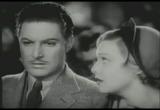 One of Alfred Hitchcock's earliest films, The 39 Steps tells the story of Richard Hannay (Robert Donat), a Canadian visitor to 1930's London. After a disturbance at a music hall, he meets Annabella Smith (Lucie Mannheim), a woman running from foreign agents. Hannay takes Smith back to his apartment, but they are followed and later that night Annabella is murdered. Hannay must go on the run so he can break the spy ring in order to prove his innocence. One of Alfred Hitchcock's earliest films, The 39 Steps tells the story of Richard Hannay (Robert Donat), a Canadian visitor to 1930's London. After a disturbance at a music hall, he meets Annabella Smith (Lucie Mannheim), a woman running from foreign agents. Hannay takes Smith back to his apartment, but they are followed and later that night Annabella is murdered. Hannay must go on the run so he can break the spy ring in order to prove his innocence.
The 39 Steps is the first in a line of Hitchcock films based upon the idea of an innocent man on the run, including Saboteur (1942) and North by Northwest (1959). Based on the adventure novel The Thirty-nine Steps by John Buchan. The film departs substantially from Buchan's novel, introducing a love interest. In this film, 'The 39 Steps' refers to the clandestine organization itself, whereas in the book and in the other film versions, it refers to physical steps. |
D.O.A. (1950)
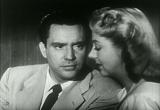 Frank Bigelow (Edmond O'Brien) is a small town accountant. After going out for an evening while on vacation in San Francisco Frank wakes up with more than just a hangover; doctors tell him he's been given a "luminous toxin" with no antidote and has, at most, a week to live. Frank Bigelow (Edmond O'Brien) is a small town accountant. After going out for an evening while on vacation in San Francisco Frank wakes up with more than just a hangover; doctors tell him he's been given a "luminous toxin" with no antidote and has, at most, a week to live.
Not knowing who has poisoned him, Frank goes on a frantic search for his murderer. Directed by Rudolph Maté and released by United Artists, DOA is a classic example of film noir.
Some trace the film's plot to Der Mann der Seinen Mörder Sucht, a 1931 German film by Robert Siodmak. The film was remade in 1969 (as the Australian Color Me Dead) and again in 1988 with Dennis Quaid as the protagonist. |
The Stranger (1946)
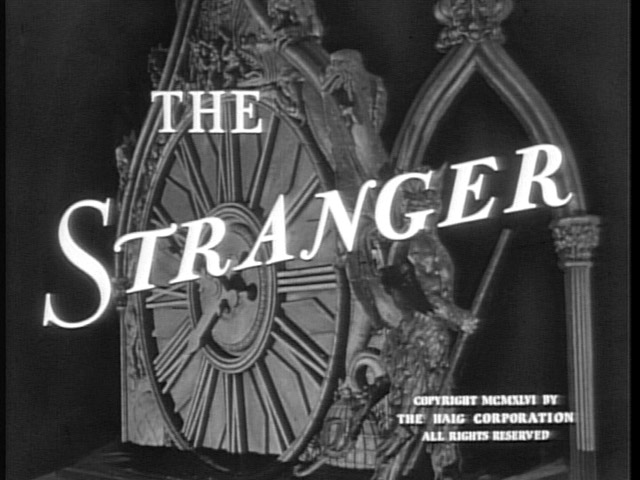 Produced by Sam Spiegel and Directed by Orson Welles, The Stranger is set in post-World War II New England. Franz Kindler (Orson Welles) is a Nazi who has assumed the false identity of Dr. Charles Rankin. Kindler marries Mary Longstreet (Loretta Young), the daughter of a Supreme Court justice, to complete his disguise. Produced by Sam Spiegel and Directed by Orson Welles, The Stranger is set in post-World War II New England. Franz Kindler (Orson Welles) is a Nazi who has assumed the false identity of Dr. Charles Rankin. Kindler marries Mary Longstreet (Loretta Young), the daughter of a Supreme Court justice, to complete his disguise.
Kindler is being persued by Mr. Wilson (Edward G. Robinson), a member of the Allied War Crimes Commission, and Kindler will do anything to prevent getting caught.
Trivia: he Stranger was the only film made by Welles to have been a bona fide box office success on the first release (Citizen Kane had made back its budget and marketing, but not enough to make a profit). |
Nosferatu (1922)
 Directed by F.W. Munarau, the silent film Nosferatu tells an eerie version of the classic vampire legend. Starring Max Schreck as the vampire Count Orlok, Nosferatu is effectively an unauthorized adaptation of Bram Stoker's novel Dracula with only a few plot points adjusted and the names of characters changed. Directed by F.W. Munarau, the silent film Nosferatu tells an eerie version of the classic vampire legend. Starring Max Schreck as the vampire Count Orlok, Nosferatu is effectively an unauthorized adaptation of Bram Stoker's novel Dracula with only a few plot points adjusted and the names of characters changed.
Trivia: This was the first and last Prana-Film GmbH film — the company declared bankruptcy after Bram Stoker's estate sued for copyright infringement and won. The court ordered all existing prints of Nosferatu destroyed, but copies had already been distributed around the world. |
Night of the Living Dead (1968)
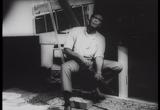 The dead come back to life and eat the living in George Romero's classic, low budget film. Several people barricade themselves inside a rural house in an attempt to survive the night. Outside are hordes of relentless, shambling zombies who can only be killed by a blow to the head. The dead come back to life and eat the living in George Romero's classic, low budget film. Several people barricade themselves inside a rural house in an attempt to survive the night. Outside are hordes of relentless, shambling zombies who can only be killed by a blow to the head.
Starring Duane Jones as Ben and Judith O'Dea as Barbra. |
M - Eine Stadt sucht einen Moerder (1931)
 This Fritz Lang 1931 classic tells the story of a serial killer (Peter Lorre) stalking the children of Berlin. Both the police and Berlin's criminal underground are out on a manhunt to stop this child killer. This Fritz Lang 1931 classic tells the story of a serial killer (Peter Lorre) stalking the children of Berlin. Both the police and Berlin's criminal underground are out on a manhunt to stop this child killer.
Trivia: While Fritz Lang had directed many films prior to this, 'M' was Lang's first film with sound. The film was co-written with his wife, Thea Von Harbou. |
The Amazing Adventure (1936)
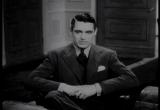 Ernest Bliss (Cary Grant) is a rich young man with nothing to do. Finding himself depressed, Ernest consults a doctor. The doctor gives Ernest a prescription that he doesn't think Ernest can fill: Ernest must earn his own living for one year using none of his current wealth. Ernest bets him 50,000 English pounds that he can. Ernest Bliss (Cary Grant) is a rich young man with nothing to do. Finding himself depressed, Ernest consults a doctor. The doctor gives Ernest a prescription that he doesn't think Ernest can fill: Ernest must earn his own living for one year using none of his current wealth. Ernest bets him 50,000 English pounds that he can. |
The Last Man on Earth (1964)
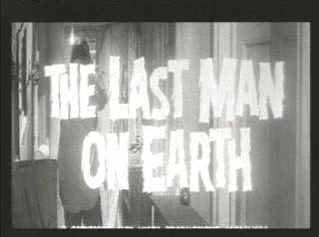 Based on the novel "I Am Legend," every day is the same for Dr. Robert Morgan (Vincent Price). He wakes up, gathers his weapons and then literally goes vampire hunting. A disease has transformed the population into these vampire like creatures, but Morgan is somehow immune. Based on the novel "I Am Legend," every day is the same for Dr. Robert Morgan (Vincent Price). He wakes up, gathers his weapons and then literally goes vampire hunting. A disease has transformed the population into these vampire like creatures, but Morgan is somehow immune.
Trivia: "I am Legend" was later remade as "The Omega Man" (with most of the Vampire portions ommitted) starring Charlton Heston. It was again remade as "I am Legend" starring Will Smith - not to be confused with the unofficial remake "I am Omega" which came out that same year starring Mark Dacascos. |
House on Haunted Hill (1959)
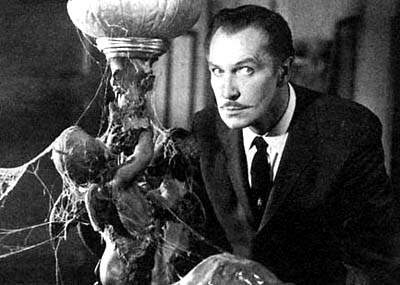 Vincent Price plays Fredrick Loren, the malevolent host of a "haunted house party." Loren offers his guests $10,000 if they can survive a night in the murderous mansion. Vincent Price plays Fredrick Loren, the malevolent host of a "haunted house party." Loren offers his guests $10,000 if they can survive a night in the murderous mansion.
Trivia: The house used for the exterior shots is the Ennis Brown house in Los Angeles, designed by Frank Lloyd Wright and built in 1924. It was later used in the films "Blade Runner," "Black Rain," and "Rocketeer." |
Scarlet Street (1945)
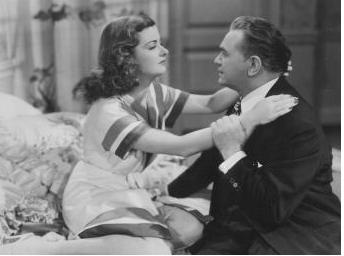 In this Noir film directed by Fritz Lang, Chris Cross (Edward G. Robinson), a cashier, has a gold watch and not much else. One night, he rescues Kitty (Joan Bennett) from her abusive boyfriend Johnny (Dan Duryea). Smitten, Chris lets her think he's a wealthy artist. Johnny pushes Kitty to help con Chris out of all the money... he doesn't have. In this Noir film directed by Fritz Lang, Chris Cross (Edward G. Robinson), a cashier, has a gold watch and not much else. One night, he rescues Kitty (Joan Bennett) from her abusive boyfriend Johnny (Dan Duryea). Smitten, Chris lets her think he's a wealthy artist. Johnny pushes Kitty to help con Chris out of all the money... he doesn't have.
Trivia: The three leads, Robinson, Duryea and Bennett, had all starred in the previous Fritz Lang noir film "The Woman in the Window." |
His Girl Friday (1940)
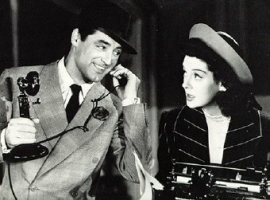 This classic comedy stars Cary Grant as Walter Burns, a newspaper editor, trying to get his former star reporter (and ex-wife) Hildy Johnson (Rosalind Russell) to cover one last story before she quits to get married. This classic comedy stars Cary Grant as Walter Burns, a newspaper editor, trying to get his former star reporter (and ex-wife) Hildy Johnson (Rosalind Russell) to cover one last story before she quits to get married.
Trivia: His Girl Friday was actually a remake of "The Front Page" (1931) (which was based off of the play by the same title), in which the character of Hildy is a man. It was selected as #19 on American Film Institute's "100 Years, 100 Laughs" List. |
The Little Shop of Horrors (1960)
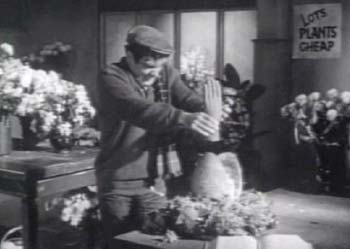 This is the original 1960's classic dark comedy directed by Roger Corman, about a nerdy flowershop clerk who grows a giant, man-eating plant and is forced to kill in order to feed it. Starring Jonathan Haze as Seymour. This is the original 1960's classic dark comedy directed by Roger Corman, about a nerdy flowershop clerk who grows a giant, man-eating plant and is forced to kill in order to feed it. Starring Jonathan Haze as Seymour.
Trivia: Jack Nicholson makes a notable early appearance as a masochistic dental patient. The film had the shortest film shoot out of all of Corman's films, only taking two days to film. |
|
|
|
|
 |
|


 
|



